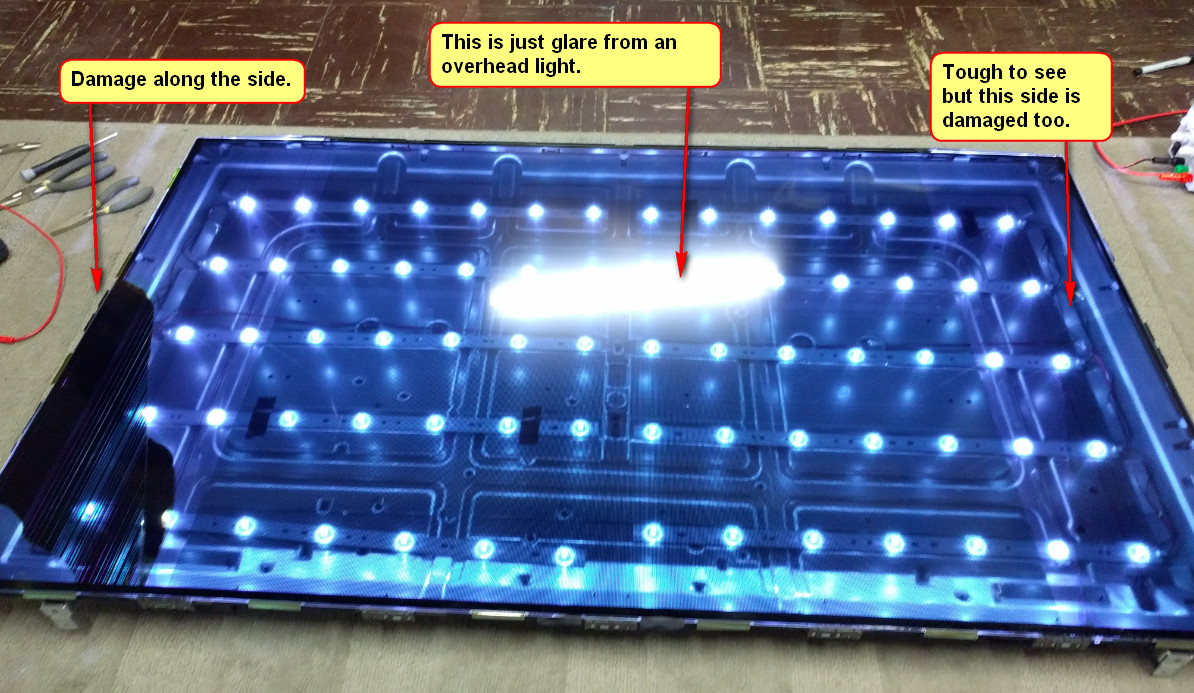Ugh. So I tried to repair a large screen LED TV recently. I've never worked on a TV before so this was definitely uncharted territory. The issue was that the LED backlight would not stay on, they would briefly flash when starting the TV and the logo would show but then the screen would go dark.
Ultimately, I was able to repair the backlight but did end up breaking the screen in the process.
:-(
You can watch all of the YouTube videos in the world but none will prepare you for how fragile a 50 inch LCD really is. They are about the thickness of a credit card and will crack internally with the slightest amount of bending. The worst part is that the break might not be visible until a backlight is applied to the screen. The screen will otherwise look normal when dark.
The most heartbreaking part: it turns out I didn't need to remove the screen (which resulted in it breaking).
Now that I've gotten that off my chest, here is some info that might help others who run into the same issue.
The TV is a Proscan PLDED5068A-C. This TV has a TP.MS3393.PC822 main board that handles the LED power supply as well as all the video functions. While researching the problem before disassembling the TV, some sources mentioned that the flashing backlight might be due to a malfunction on one of the LED strips. Supposedly, the LED power supply will shut off if the current draw is not correct.
So I initially suspected that the LED power supply might have been the problem. Unfortunately, I didn't have a easy way to confirm this. The only bench top DC power supply I own only goes up to 30V and these LED arrays require 100V. I couldn't find a service manual for the board either. I thought it would be fairly easy to remove the screen and access the LEDs to test for issues. Removing the screen on a TV is a pain. There many fasteners and spacers involved that must be tracked. After carefully removing the screen, the white reflective backing material around the LEDs must be removed which is effectively glued to the base. Once the LEDs are exposed, there are test points that can be used to apply voltage either to an entire strip or to a single LED. Each LED strip requires 20V and consumes about 80mA. Once I tested all 10 of the LED strips, it was clear that none were malfunctioning and the power supply was the culprit.
After ordering a new board online and installing it, the LEDs did work properly but I learned that the screen was damaged:

Oh well, live and learn. Ultimately, I don't really know what I could have done differently in hindsight. If I repair another TV, I'll definitely try to test the backlight without remove the screen first.